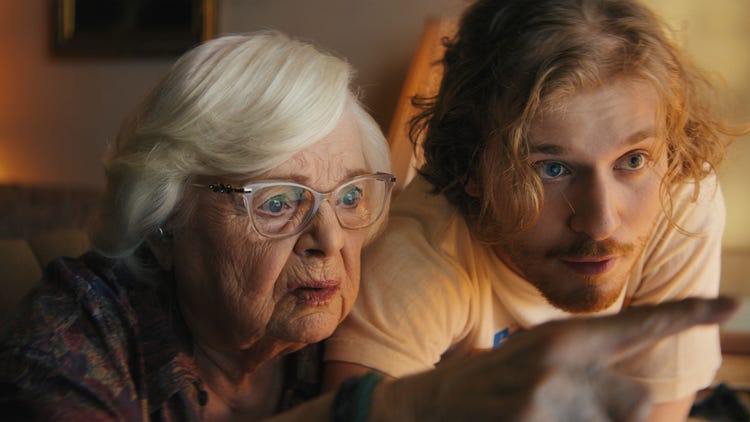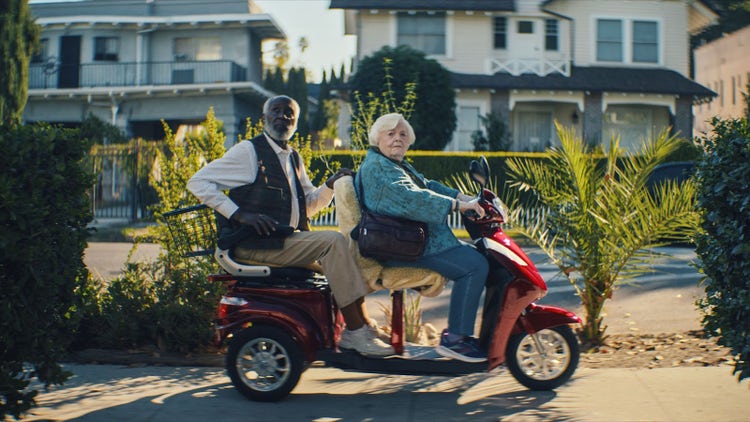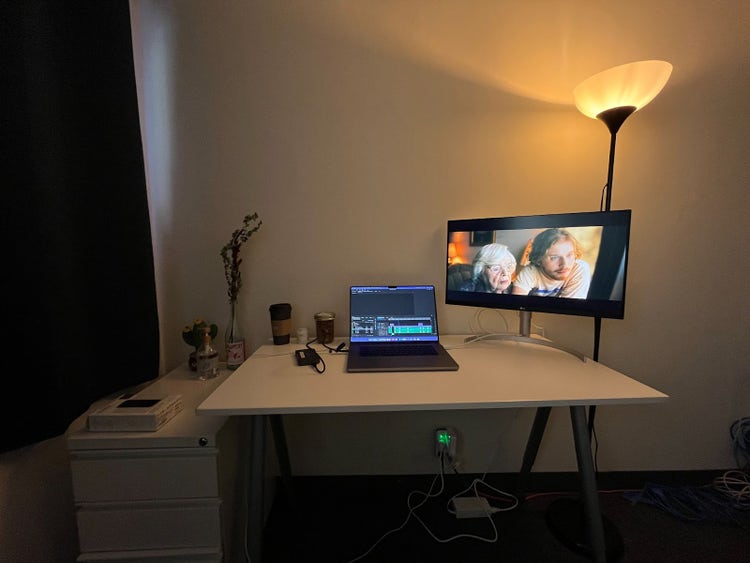Director, writer, and editor Josh Margolin uses Adobe Premiere Pro to bring “Thelma” to the Sundance stage

Image Source: Sundance Film Festival.
Inspired by the real-life experience of director, writer, and editor Josh Margolin’s own family, “Thelma,” starring Oscar-nominated actress June Squibb, turns an elderly grandmother into an unlikely action hero, tackling themes of aging, mortality, and human frailty.
This is Margolin’s directorial debut, but it’s also worth noting the many other hats he wore in addition to directing, including the role of editor. Margolin relied on Adobe Premiere Pro and Frame.io to cut the film, while his VFX team used After Effects. Accessibility was an important component here: Margolin leaned on Adobe’s Speech to Text tool to create captions.
“Thelma” debuted at Sundance Film Festival on January 18 and has been picked up for theatrical distribution by Magnolia Pictures.
How and where did you first learn to edit?
I discovered the magic of iMovie making shorts with my friends in elementary school. I think the first thing we ever made was called “The Matrix 2”, which was basically a fight scene built around the discovery that we could cut the camera — leave the frame — then hit record again, and when we put it together it would look like we disappeared and/or re-appeared. From there, I was hooked and just kept making things.
How do you begin a project/set up your workspace?
I usually start moving through things chronologically. I rarely go through every take when I first start assembling a scene. I’ll watch, and if something strikes me as right, I’ll try to build from it. Eventually, I’ll run back through and make sure I turned over every stone, but I like to free myself up to make choices before I know every corner of the footage.
Tell us about a favorite scene or moment from this project and why it stands out to you.
Without giving too much away, there’s a scene with June Squibb and Richard Roundtree in an abandoned lot at night that cut together pretty much how I hoped it would, which was a big relief. It’s an important scene without any dialogue, so watching it come together visually the way I had imagined was really satisfying. I also really love the scenes with Fred Hechinger, Parker Posey, and Clark Gregg all talking over each other. I love overlapping dialogue, and those were a real joy to edit because everyone was giving such wonderful performances.
What were some specific post-production challenges you faced that were unique to your project? How did you go about solving them?
A lot of the movie hinges on things that take place on a screen. We were using a good deal of VFX — not only to convey plot but also character — trying to dramatize how characters of different ages use their technology for comedic and dramatic effect. That was a challenging and also fun place to crack those different looks and feels. It took us a second to get it right, but we had an awesome VFX team who was committed to cracking it along with us, and I’m really happy with how it all came together.

Image Source: Sundance Film Festival.
What Adobe tools did you use on this project and why did you originally choose them?
I cut the movie on Premiere Pro, which is what I typically use. I find the interface really intuitive and smooth so it’s definitely my go-to program. We also leaned on Frame.io pretty heavily for sharing cuts, color passes, etc., which allowed us to give notes and resolve them in real time. It was super helpful because of how precise you can be in giving feedback. Throughout post production, a handful of our core team members weren’t in the same country, so it definitely made some of the remote elements of the process a lot smoother and more conversational.
We created closed captioning for a deliverable during our post process and used Speech to Text, which was surprisingly easy and accurate! Because our movie centers characters in their 90's, and we hope people of all ages will be able to experience it, accessibility is always on the brain. It was great to realize this tool was so readily available to us.
If you could share one tip about Premiere Pro, what would it be?
Learn more hot keys than me! Since I basically taught myself to edit over the years through trial and error, I feel like I’ve never fully learned all the shortcuts available to me and gotten a bit stuck in my ways. So my advice is… know more than me, which honestly isn’t that high of a bar when it comes to hot keys.
Who is your creative inspiration and why?
Oh man, there are so many, but for this project I’d have to say it’s my grandma, Thelma (who is currently 103), with a splash of Tom Cruise and the Mission: Impossible movies. Those things might sound disparate, but they’re actually very connected as I hope this movie will demonstrate. Fingers crossed!
What’s the toughest thing you’ve had to face in your career and how did you overcome it? What advice do you have for aspiring filmmakers or content creators?
I think patience and doubt are big and constant obstacles. I used to spread myself pretty thin and work on a ton of things at once in the hopes that something would work. As I got a little older, I started being more considerate with where I put my time. I think betting on things you really believe in is a relatively sane way to carve a path in a tough industry because even in success, you’re going to be spending a lot of time on that thing and want to have enough love and passion in the tank for it to carry you through.
Share a photo of where you work. What’s your favorite thing about your workspace and why?

Image source: Josh Margolin director/writer/editor of “Thelma”.
I cut the movie in a little office at this post house called Fancy Film. I tried to keep my space pretty minimal. The footage could be overwhelming, so I wanted my surroundings to be the opposite. I really enjoyed having that space.